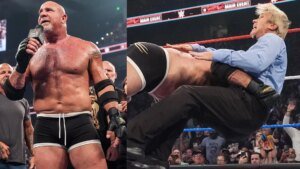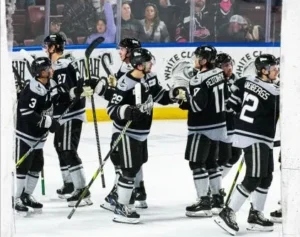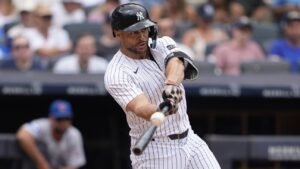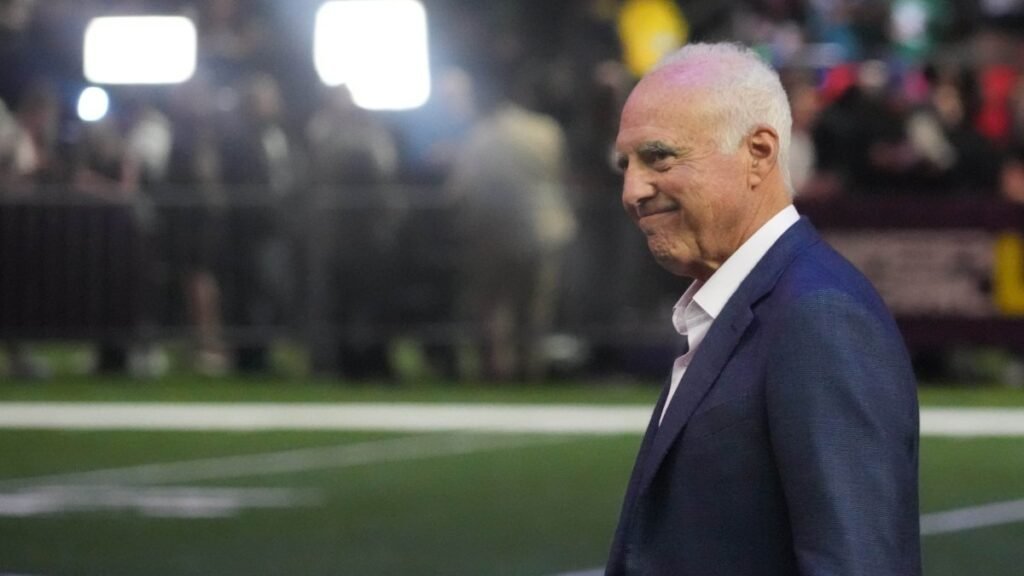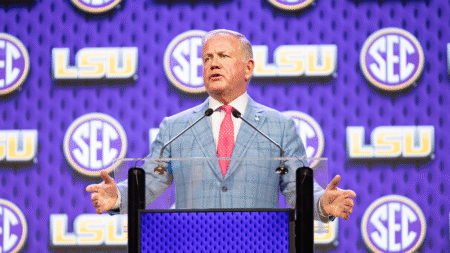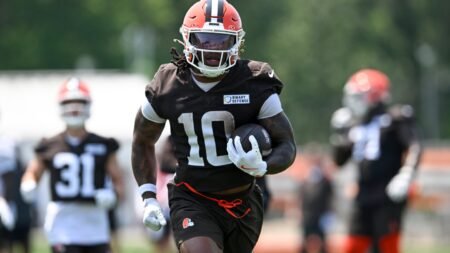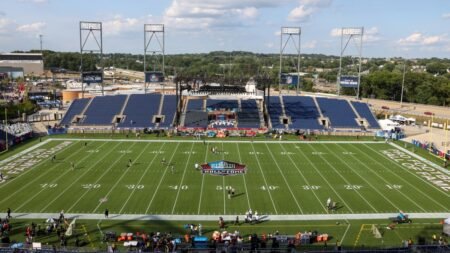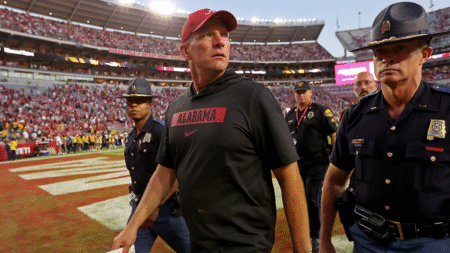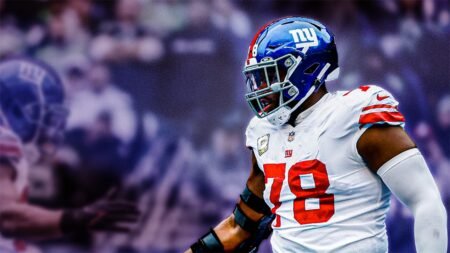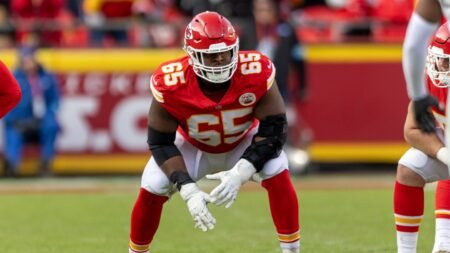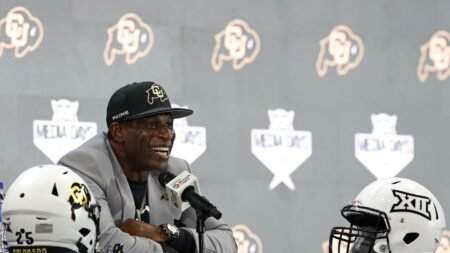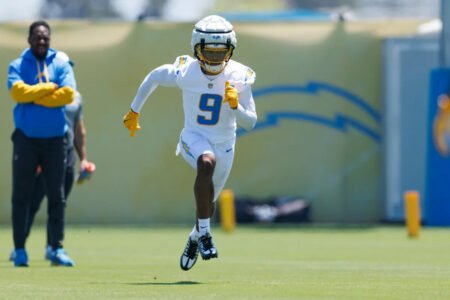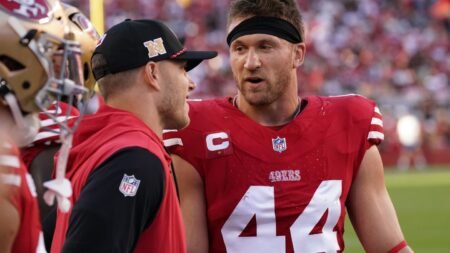A remarkable Jeff Lurie interview from 30 years ago, some intriguing Grant Calcaterra stats and why Randall Cunningham should have been NFL MVP in 1990.
And tons more of the usual stats, historial nuggets and player observations you can’t live without once a week.
Here’s this week’s edition of Roob’s 10 Random Eagles Offseason Observations as training camp gets closer and closer.
1. The Eagles have had such a splendid scouting department for years now it’s easy to forget that wasn’t always the case. In fact, when Jeff Lurie bought the Eagles from Norman Braman in 1994, they had the worst scouting department in the league. By far. No coincidence the Eagles were a perennial loser before Lurie – four playoff wins from 1960 through 1994 – and have won 21 playoff games with just eight losing records in 31 seasons since he bought the team. When Lurie took over the franchise, he was shocked to discover that the Eagles barely had a scouting department, and it didn’t take him long to understand the correlation between weak scouting and the franchise’s lack of success for the previous few decades. During training camp in 1995, Bernard Williams – a 1st-round pick a year earlier – was suspended by the NFL for a positive drug test (and never played again). The next day, Lurie sat on a couch in a common room at West Chester University’s Schmidt Hall and spoke candidly – incredibly candidly – about how dramatically Braman had ignored the scouting department, which led directly to catastrophic 1st- or 2nd-round draft picks like Antone Davis, Leonard Renfro, Bruce Walker, Siran Stacy and Williams. Even just a few months after buying the team, Lurie already understood the relationship between building an exceptional scouting department and team success, and he saw exactly how dire the situation was. These days, Eagles scouting – despite losing a number of top executives in recent years – is among the best in the league, led by Howie Roseman. When Lurie bought the team? “When I took over the team, there was (vice president of player personnel) John Wooten in his position for a couple months, with two scouts that hadn’t really covered the country very much. And John was elevated into a position that was really disorganized. They had nobody doing player personnel and two scouts who were sort of covering the country but in a rather haphazard way. It was a mess. It was an organizational weakness. When you have a lack of manpower and a lack of people around you who are obsessed with winning Super Bowls, you’re going to spend less on scouting and information gathering. You’ve got to be the best information-gathering team. You’ve got to have a very strong scouting department. You’ve got to have incredible detailed analysis in terms of the players’ background, personality profile, family background. It was an obvious weakness, part of the baggage I inherited. Maybe after I sell the team, I’ll write a book about the baggage. But what we tried to accomplish (by revamping the staff) is to put ourselves in the best position to know everything. Teams that draft the smartest, the teams that research the smartest are the teams that are not going to have to deal with this.”
2. Some revealing Grant Calcaterra analytics from last year: 1) Among 58 tight ends with at least 20 targets, Calcaterra ranked third with 9.9 yards per target, behind only George Kittle (11.8) and Tucker Kraft (10.1), 2) He ranked seventh in yards before the catch at 7.2, which means he’s running deep routes but still catching a high percentage of his targets; 3) He tied for first in drop percentage at zero; his 24 catches without a drop were 3rd-most by a tight end last year (behind Foster Moreau’s 32 and Luke Schoonmaker’s 27); 4) His 80 percent catch percentage (24 catches on 30 targets) was 12th-highest; and 5) he finished eighth in yards per catch at 12.4. Pretty solid production for a backup and it makes you wonder if the Eagles believe he can be a TE2 post-Dallas Goedert.
3A. Maybe one of the most intriguing questions facing the Eagles this year is what will Saquon Barkley do for an encore? We took a look a couple months ago at all the 2,000-yard rushers in NFL history and their decline the next year. The eight other 2,000-yard rushers dropped from an average of 2,046 yards and 5.6 yards per carry to 1,079 yards and 4.2 yards per carry. In fact, the top 23 single-season rushing leaders of all-time all had fewer yards the next year. But I can’t help thinking Barkley could be different. For a few reasons. First of all, he’s got a coach who really watches out for him, whether it’s by limiting his reps during training camp, getting him out of blowouts early or giving him practice days off during the season. Second, Barkley understands exactly what kind of toll his 482 touches took last year and has handled his offseason accordingly, taking plenty of recovery time mixed in with lifting, cardio and everything else in his offseason routine. And third, he’s running behind one of the best offensive lines ever assembled, and that’s not going to change.Barkley averaged 3.84 yards per carry before contact last year, and since Stathead began tracking yards before contact in 2016 that’s by far the highest – Travis Etienne is next-highest at 3.35 from 2022. Barkley averaged 2.09 yards before contact in his six years with the Giants, so you can see how much this o-line means. Does all this mean he’s going off for 2,000 yards again? Nah. That’s just not realistic to expect. And I’d expect defenses to do even more to try and limit Barkley in 2025. But I really believe when all is said and done, it’ll be another fantastic season for No. 26.
3B. Of 78 players with at least 500 carries since 2016, Jalen Hurts has the 4th-highest yards-before-contact average at 3.7, trailing three other QBs – Kyler Murray 5.2, Lamar Jackson 4.4 and Russell Wilson 4.3.
4. Ndamukong Suh, who finished his career with the Eagles during the 2022 season, announced his retirement Saturday after 13 seasons, three 1st-team all-pros, two 2nd-team all-pros, five Pro Bowls, 71 ½ sacks and seven more in seven postseasons with five teams. Suh is an almost-certain Hall of Famer. Pro Football Reference’s Hall of Fame monitor has him with an 84.58 grade, and nine of 10 interior lineman with a grade of at least 80 are all in (all but Kevin Williams, who will eventually go in). If Suh does go into the Hall, he’ll be the first Hall of Famer to finish his career with the Eagles since Richard Dent in 1997. Two Hall of Fame wide receivers also finished their careers with the Eagles in the mid-1990s – James Lofton in 1993 and Art Monk in 1995. Claude Humphrey finished his career with the Eagles in 1981, and before that you have to go back to four Hall of Famers in the 1960s who played their final season with the Eagles – Norm Van Brocklin (1960), Chuck Bednarik (1962), Ollie Matson (1966) and Jim Ringo (1967). Other Hall of Famers who finished with the Eagles are Bill Hewitt (1943), Alex Wojciechowicz (1950), Steve Van Buren (1951) and Pete Pihos (1955). Of those 12 Hall of Famers, only three spent their entire career with the Eagles: Van Buren, Pihos and Bednarik.
5. Here’s more evidence that no matter what the stats say, DeVonta Smith is one of the NFL’s finest wide receivers. Stathead has catch percentage data going back to 1992, and in those 33 years, 302 wide receivers have at least 200 catches. Of those 302 WRs, DeVonta Smith has the 11th-best catch percentage with receptions on 69.8 percent of his targets. Considering the degree of difficulty of so many of Smith’s catches – lunging sideline grabs, leaping catches in traffic, deep balls – that’s truly remarkable. In fact, his 13.0 yards per catch is higher than any of the 10 other WRs who’ve caught at least 69.8 percent of their targets. So he’s the only receiver since 1992 to average 13 yards per carry while catching at least 69.8 percent of his targets. Smith has the two-highest catch percentage seasons by an Eagles WR since 1992 – 72.3 percent in 2023 and 76.4 percent last year (3rd-highest in the league, behind Amon-Ra St. Brown’s 81.6 percent and Chris Godwin’s 80.6). Only Smith and St. Brown have been over 72 percent in each of the last two years. Not surprisingly, A.J. Brown has the 2nd-highest career catch percentage on record by an Eagles WR at 65.3 percent, with Jordan Matthews third at 64.5 percent. Also over 60 percent are Jason Avant (62.9) and Jeremy Maclin (60.5).
6. The Eagles have drafted five offensive linemen in their history who have made at least three Pro Bowls as Eagles. Howie Roseman was GM when they drafted three of the five – Jason Kelce in 2011, Lane Johnson in 2013 and Landon Dickerson in 2021. The only others are 1964 draft pick Bob Brown and 1998 pick Tra Thomas. They also drafted two offensive linemen who made at least six Pro Bowls but never played for the Eagles. Lou Creekmur was their 26th-round pick in 1948 and made eight Pro Bowls for the Lions and went into the Hall of Fame in 1996, and Bob Kuechenberg was their 4th-round pick in 1969 and made six Pro Bowls playing for the Dolphins.
7A. Randall Cunningham’s 1990 season was just unreal. He threw 30 touchdown passes. ran for 942 yards, and nobody else had 30 TD passes and 900 rushing yards in a season for 29 years, until Lamar Jacksonin 2019. And he did that without a wide receiver with 40 catches. The Eagles had seven players that year with at least 10 receptions – three running backs (Keith Byars, Heath Sherman, Anthony Toney), two tight ends (Keith Jackson, Mickey Shuler) and two receivers (Fred Barnett and Calvin Williams). Running backs and tight ends had 197 of the Eagles’ 281 catches that year, leaving just 84 for WRs. And Randall still had an MVP-caliber season.
7B. Randall should have been MVP that year. He finished a close second to Joe Montana, 26 votes to 18. But Randall had more TD passes (30 to 26), fewer interceptions (13 to 16), a higher passer rating (91.6 to 89.0) and obviously more rushing yards (942 to 162). And Montana had Jerry Rice, John Taylor and Brent Jones. Randall finally got his MVP with the Vikings under Brian Billick in 1998, but he deserved it in 1990.
8. Jalen Hurts Stat(s) of the Day: Jalen Hurts is one of only three active quarterbacks who’s started two Super Bowls. The others are Patrick Mahomes and Russell Wilson. He’s one of only six active QBs to win a Super Bowl, along with Mahomes, Wilson, Aaron Rodgers, Joe Flacco and Matt Stafford. He’s the only quarterback drafted since 2018 to win a Super Bowl. Mahomes and Hurts are the only QBs drafted after 2012 to win a Super Bowl.
9. None of the Eagles’ 11 defensive starters in Super Bowl LVII are still on the roster: Linval Joseph, Fletcher Cox, Javon Hargrave, Josh Sweat, Haason Reddick, T.J. Edwards, Avonte Maddox, James Bradberry, Darius Slay, Marcus Epps and C.J. Gardner-Johnson. The only defensive players who even got on the field that day just two years ago and are still on the team are Jordan Davis, Reed Blankenship and Nakobe Dean. Only Davis (10 snaps) and Blankenship (one snap) played on defense, with Dean just on special teams. Seven of the 11 offensive starters from that day are still on the roster (A.J. Brown, DeVonta Smith, Dallas Goedert, Jalen Hurts, Lane Johnson, Jordan Mailata, Landon Dickerson). Gone are Quez Watkins, Jason Kelce, Isaac Seumalo and Miles Sanders.
10. It’s crazy that DeSean Jackson caught touchdown passes of at least 70 yards from both Kevin Kolb and Jalen Hurts.
Read the full article here
